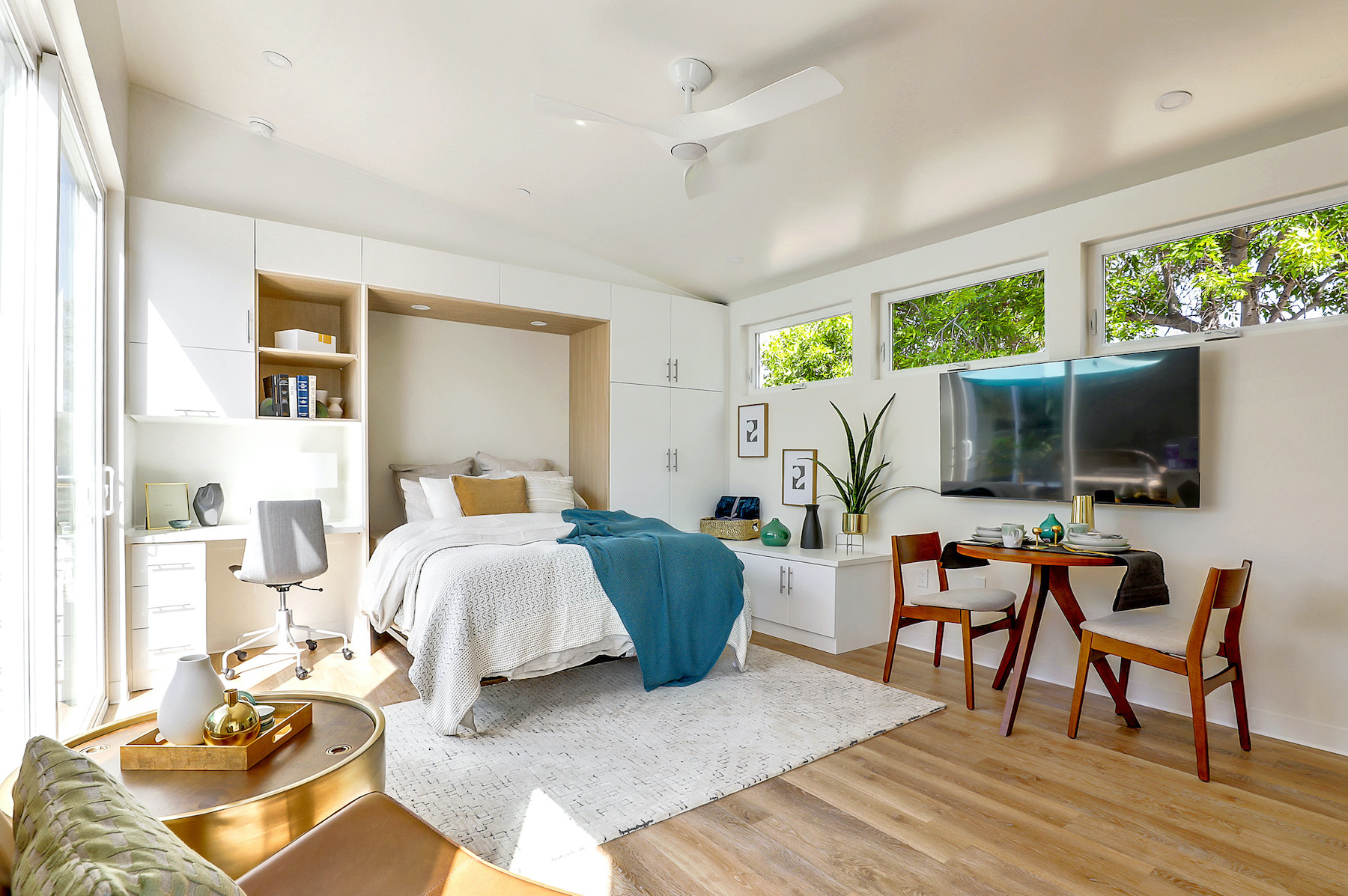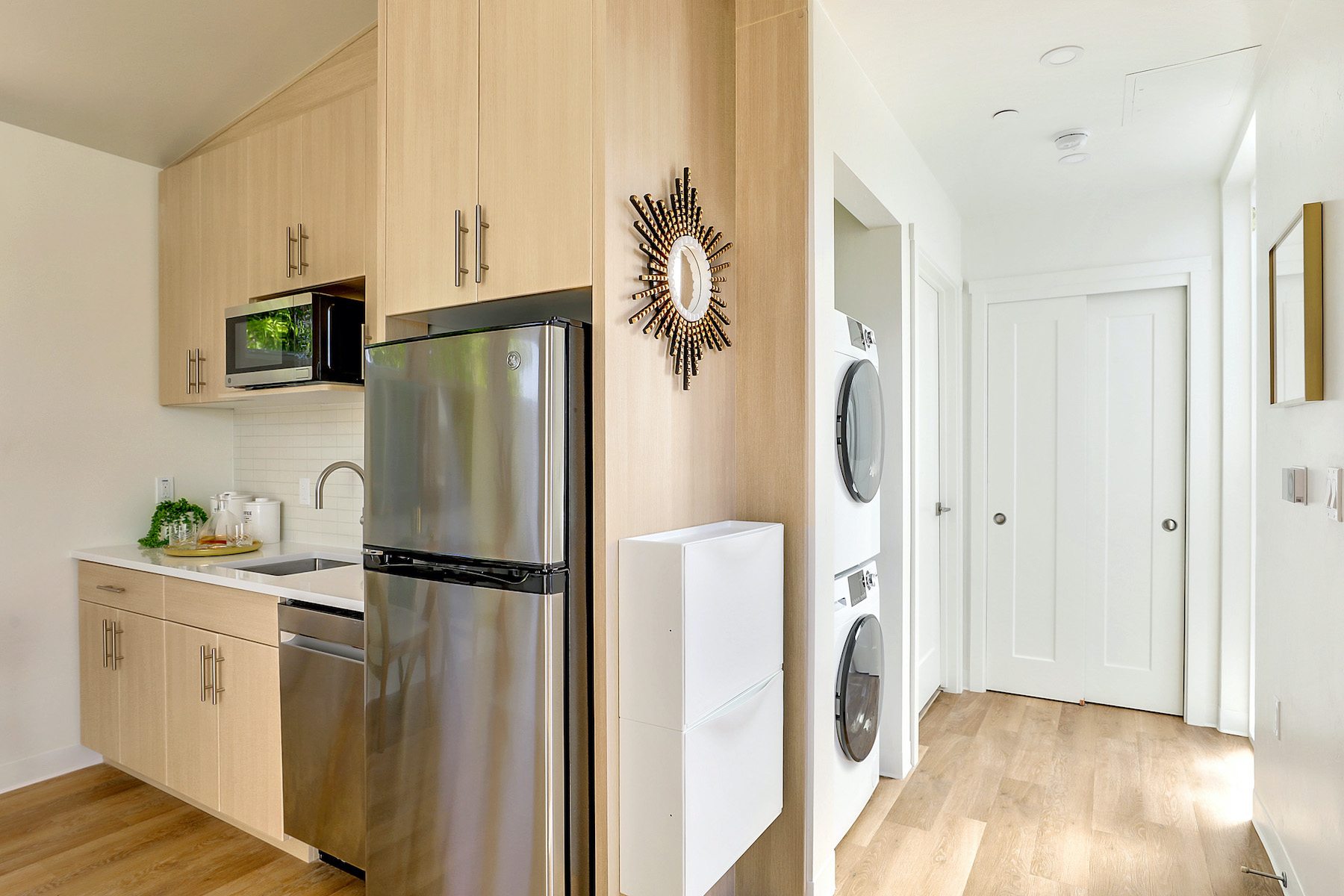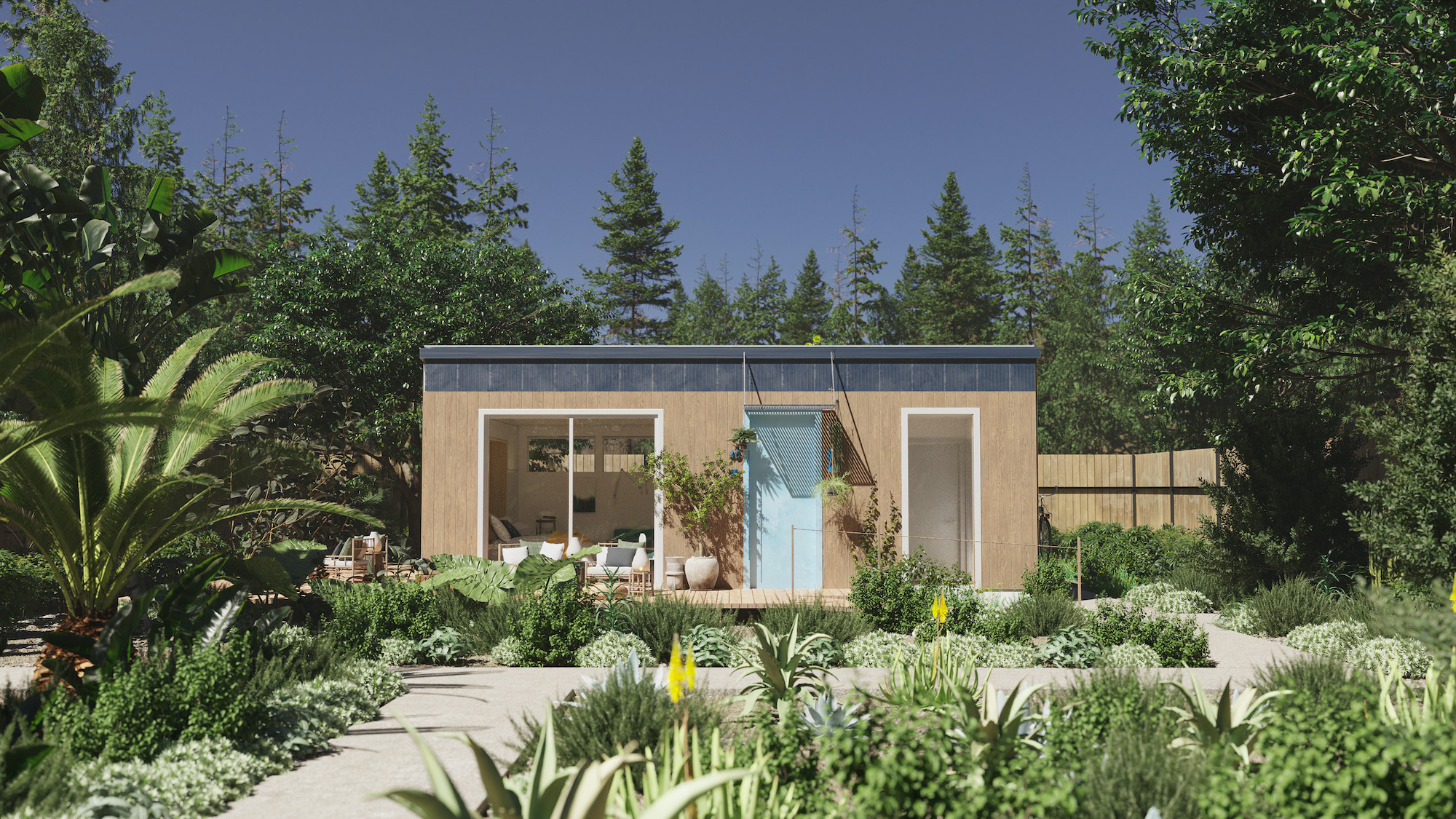CAZA, a Brooklyn-based concept-driven design studio, has developed two ADU prototypes with Spacial, one of the biggest prefabrication companies in the country. Making both a studio and a one-bedroom unit, either accessory dwelling unit (ADU) can complement a family’s existing home, be used as self-use office space, be used as a guesthouse, or even bought as a rental investment.
CAZA is known for sustainability and modern design, and Spacial is known for its ability to make the most of the space available for design—valuing every inch you have to work with. Together the two developed customizable and sustainable ADUs that achieve both of their goals.
CAZA’S ACCESSORY DWELLING UNITS ARE SUSTAINABLE AND EFFICIENT
Typically, ADUs carry a huge carbon footprint, but one of CAZA’s design goals was to minimize their overall impact on the environment. The design team did this by building the ADU with cross-laminated timber, inserting extremely efficient HVAC systems, and generating energy for the units with roof-top solar panels.
CAZA’s prototype is the first ADU to receive an Energy Star rating, and has also met requirements for LEED Platinum certifications, Passivhaus certifications, and the California Green Building Standards Code.
The 400-square-foot studio features a small kitchen combined to a lounge, workspace, and a sleeping area. With the studio being so compact, the sides of the dresser can serve as both a desk and dining table. The Murphy bed can also be folded into the wall and its cross support can become a desk or work surface.

The features of the one-bedroom ADU include an expanded kitchen, dining, a living room area, as well as a full bedroom. For workspace, a built-in desk is connected to the side of the bed.
Both the Studio and the One-bedroom include:
- Sliding Glass Panels that open the house directly to a deck or garden
- Strategically-located clerestory windows that maximize cross-ventilation
- Exterior walls that support plantings
- Roof-top solar panels
Addressing The Crisis Efficiently and Effectively
Although ADUs have long existed, they have recently garnered more attention as an answer to the affordable housing crisis that leverages existing city infrastructure.

CAZA has worked on many projects of different types, both small and large, including commercial, housing, civic buildings, and schools. The company’s ADU prototype—elevated, spacious, easy to build, and sustainable—could be the starting point to addressing the existing housing crisis.
These ADUs don’t just provide a solution to the crisis, but do so extremely efficiently. This component of the process cannot be overlooked. The designs are specifically schemed to leverage existing production capabilities, supply chains, and customer-service infrastructure.
These integrations are extremely important when it comes to making sure the housing crisis is a priority. With providing a solution to the lack of housing being the end goal, production capabilities are a huge part of making sure that goal comes to life. This helps homes be readily accessible and available, and allows a customized home to be ordered online, delivered, and installed on-site within weeks.
Spacial has launched these ADUs across the Bay Area, with plans to expand throughout California. The studio option starts at $139,000, while the one-bedroom starts at $157,000.









